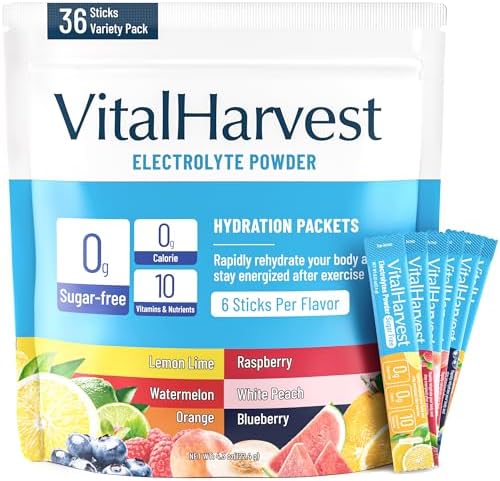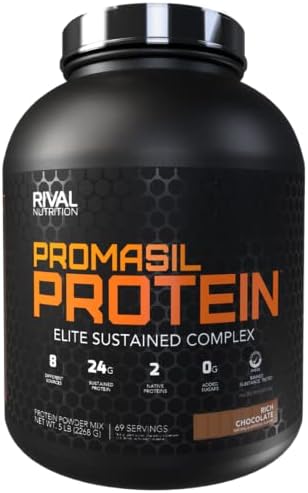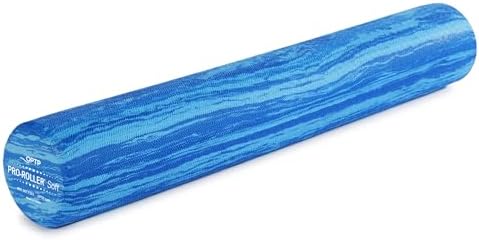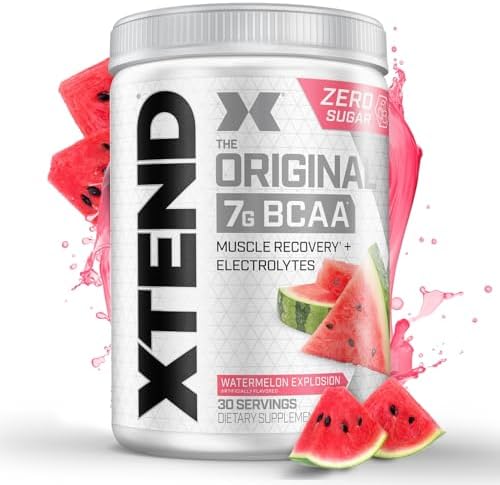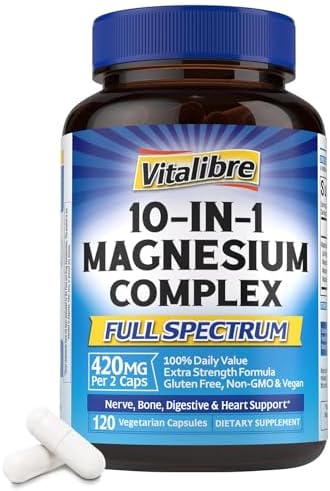Muscle Soreness After Workout: Causes, Prevention, and Effective Recovery Strategies for Optimal Performance
This post may contain affiliate links. If you purchase through these links, I may earn a small commission at no extra cost to you. LEARN MORE.
Muscle soreness after workout is something a lot of people deal with, whether they’re just starting out or they’ve been at it for years. It tends to show up a day or two after you push yourself, leaving muscles feeling stiff, tender, or just plain achy.
This kind of soreness usually comes from tiny tears and some inflammation in your muscle fibers as they adapt and get stronger.

While muscle soreness is pretty normal after tough workouts, there are ways to keep it at bay and recover faster. Light movement, stretching, a good night’s sleep, and eating well all help your body repair itself.
Things like foam rolling or a gentle massage might also take the edge off and help you bounce back a little quicker.
If you’re starting your fitness journey, explore our beginner home workout guide to reduce the risk of soreness and injury.
Key Takeaways
- Muscle soreness is common after exercise and is usually temporary.
- Prevention and recovery techniques can make soreness easier to manage.
- Proper nutrition, rest, and simple self-care speed up muscle recovery.
Understanding Muscle Soreness After Workout
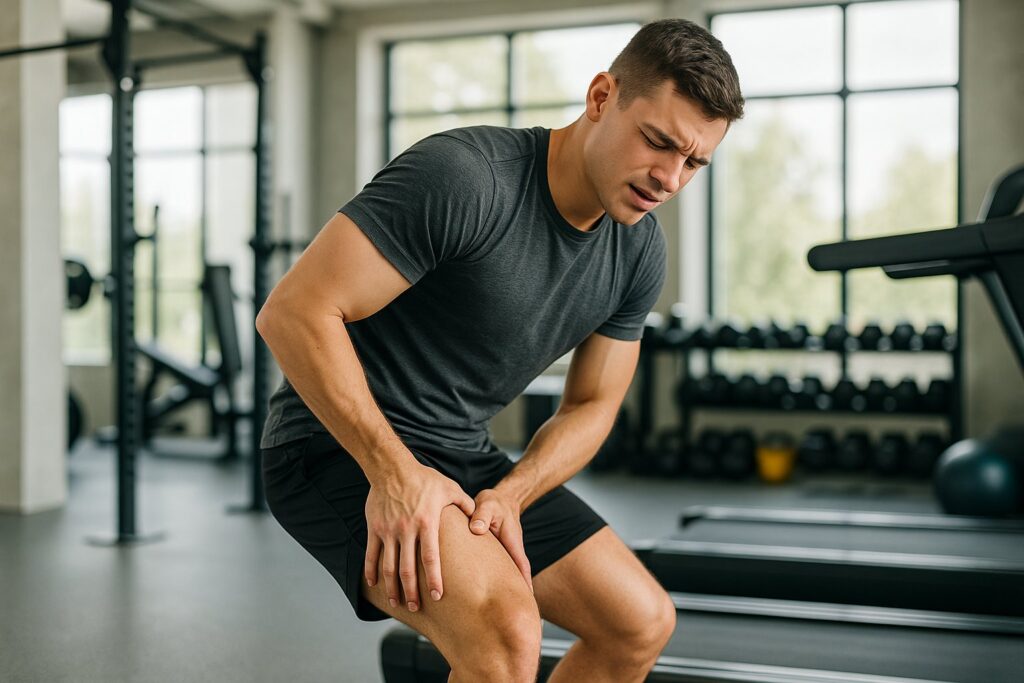
Muscle soreness after exercise is a regular experience for people at all fitness levels. Understanding why muscles ache and how it feels can make a big difference in how you recover.
What Is Muscle Soreness
Muscle soreness is the discomfort you feel in muscles after exercise or doing something your body isn’t used to. It’s usually described as tender, aching, or stiff.
This happens when you push your muscles harder than usual, which causes those tiny injuries to the muscle fibers. The soreness is part of the muscle’s natural repair process.
Most people notice this pain after things like lifting weights, running, or trying a new workout. Sometimes it’s mild and fades quickly, but other times it can be strong enough to make even basic movements annoying.
Both beginners and seasoned athletes—yes, even bodybuilders—run into muscle soreness, especially with intense or new workouts.
Types of Muscle Soreness: Acute and Delayed Onset
There are mainly two types of muscle soreness: acute muscle soreness and delayed onset muscle soreness (DOMS).
- Acute muscle soreness shows up during or right after exercise. It usually goes away within a few hours. This is mostly from a lactic acid buildup and muscle fatigue.
- Delayed onset muscle soreness (DOMS) kicks in several hours to even days after your workout. Most people start to feel DOMS about 12-24 hours later, and it can peak at 48-72 hours. It’s especially common after unfamiliar or tough workouts, or anything with eccentric contractions—like slowly lowering a weight.
DOMS tends to fade on its own but can stick around for up to a week. Changing up your routine or pushing yourself often brings it on.
How Muscle Soreness Impacts Performance
Muscle soreness can mess with movement, strength, and your usual workout routine. When you’re sore, you might notice you’re less flexible or just not as strong as usual.
This can make exercise feel like a chore and sometimes even kill your motivation. For athletes or anyone training hard, soreness might mean dialing things back or switching up the workout plan to let muscles heal.
Really bad soreness can throw off your coordination and reaction time, which isn’t great for avoiding injuries. Giving your body enough time to recover is more important than it sounds.
The table below highlights typical impacts:
| Impact Area | Effect During Soreness |
|---|---|
| Movement | Stiffness, slower motion |
| Strength | Temporary decrease |
| Exercise Routine | May need lighter workouts |
| Motivation | Possible decrease |
For better post-exercise energy and reduced fatigue, try Nagano Tonic, which supports muscle recovery and natural energy balance.
Physiological Causes of Muscle Soreness

Muscle soreness after working out is the result of a few things happening inside your body. Muscle fibers get stressed, your immune system jumps in, and certain movements put extra strain on your muscles.
Exercise-Induced Muscle Damage
After a workout, tiny tears form in your muscle fibers, especially if you’ve done something new or extra tough. This is called exercise-induced muscle damage.
When those little fibers get damaged, your body gets to work repairing and rebuilding them. This is how muscles grow stronger, but it usually comes with pain and stiffness a day or two later—hello, DOMS.
Muscle protein synthesis ramps up after this kind of damage. That’s your body making new proteins to fix the torn fibers. The amount of damage—and soreness—depends on how hard or long you exercise.
The Inflammatory Response
Once muscle damage happens, your body fires up an inflammatory response. Blood flow increases and immune cells rush in to clean up the mess and start repairs.
You might notice swelling, redness, or heat after a tough workout. Chemicals like cytokines are released, which can make everything feel even more sore. The inflammation is just your body doing its job, but it can make things uncomfortable for a bit.
Some folks get hit harder by this response, especially after long or unfamiliar workouts. Usually, the pain fades as healing gets underway.
Role of Eccentric and Intense Workouts
Soreness is especially common after eccentric exercises, which are moves where your muscle lengthens while under tension—think slowly lowering a weight or running downhill.
During eccentric training, the muscle damage is worse compared to other types of contractions. That means more soreness and a longer recovery.
Workout intensity matters too. The harder or longer you go, the more your muscles will complain afterward. Paying attention to both the type and intensity of exercise can help you avoid feeling wrecked for days.
Discover how the Exercise-Ketosis Connection can improve workout recovery and accelerate fat loss.
Risk Factors and Contributors
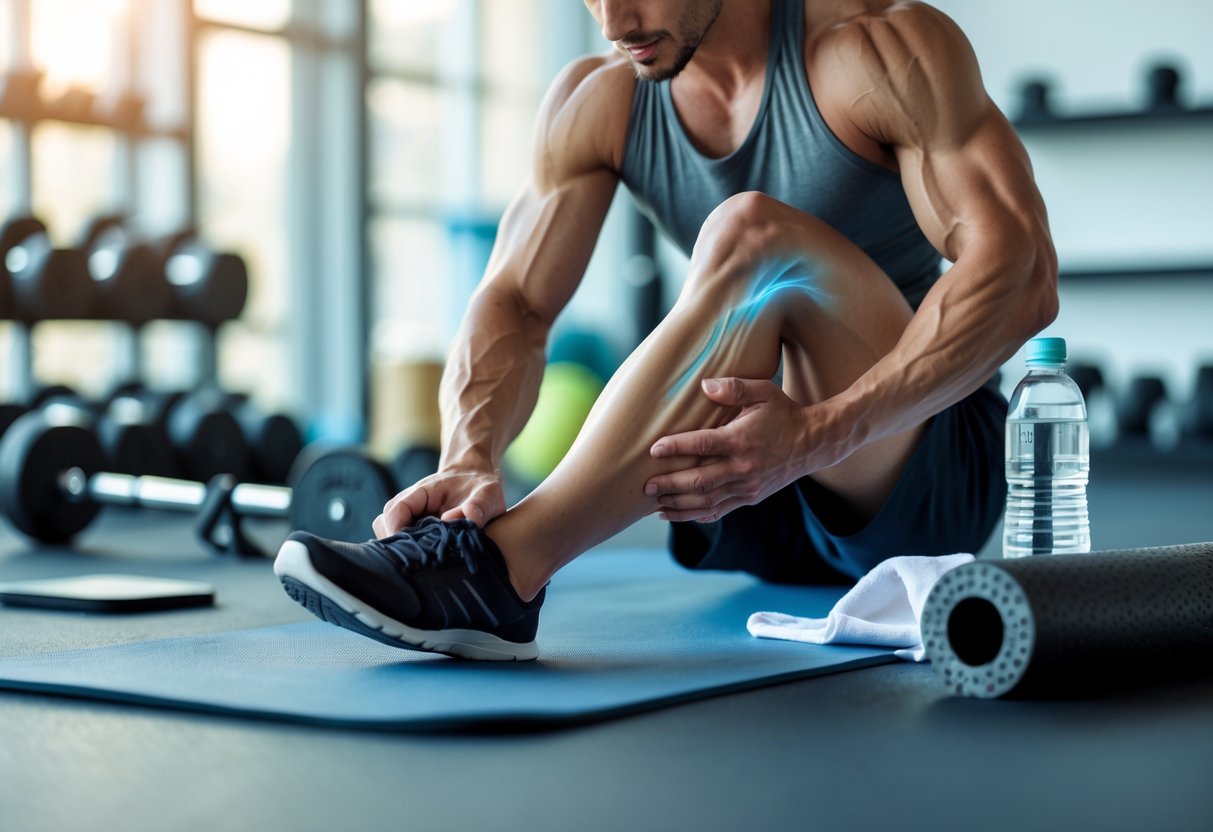
Muscle soreness can get worse if you suddenly change your workout habits, push past your limits, or don’t stay hydrated. Knowing what sets off soreness makes it easier to avoid unnecessary pain.
Training Adaptations and Overtraining
Your body gets stronger by adapting to repeated stress. But if you ramp up intensity or frequency too fast, your muscles might not have time to catch up.
This can lead to overtraining syndrome. Overtraining is linked to constant soreness, fatigue, and even worse performance. You might notice poor sleep, mood swings, or nagging injuries.
It’s smart to increase workouts gradually—just a little at a time. Rest days and paying attention to muscle fatigue really do matter.
Some people like to keep a workout log to track progress and spot early signs of overdoing it.
Workout Routine Changes
Soreness often strikes when you make big changes to your routine. Trying new moves, working different muscle groups, or doing more reps than usual can all stress your muscles in new ways.
Switching routines too quickly raises your risk of DOMS. Eccentric exercises (like lowering weights) seem to cause the most trouble. Introducing changes gradually lets your body adjust and keeps soreness manageable.
It’s usually best to change one thing at a time, like adding a new exercise or increasing sets. That way, you don’t shock your system all at once.
Dehydration and Electrolyte Imbalance
Staying hydrated is crucial for muscle recovery. If you’re dehydrated, soreness feels worse and you might even get cramps.
Electrolytes—like sodium, potassium, calcium, and magnesium—help your muscles contract and relax. Heavy sweating during workouts can wipe out both fluids and electrolytes, especially in the heat or during long sessions.
Signs of an imbalance include muscle weakness, cramps, or headaches. To avoid this, drink fluids regularly before, during, and after exercise.
Foods and drinks rich in electrolytes—bananas, sports drinks, leafy greens—can help too. If your urine is pale yellow, you’re probably hydrated enough.
Try some best selling electrolyte power drink mix from Amazon below.
Key Biomarkers and Indicators

There are certain biomarkers that show how much muscle damage has happened after a workout. These markers also give hints about inflammation and muscle fatigue, which all play a role in how sore you feel and how quickly you bounce back.
Creatine Kinase and CK Levels
Creatine kinase (CK) is an enzyme hanging out in your muscles. When you work out hard or damage your muscles, CK leaks into your bloodstream.
Elevated CK levels in blood tests are often used to see how much muscle damage has happened. Big jumps in CK usually come after intense or unfamiliar workouts. Levels can spike within hours and stay high for days, especially after something new or extra tough.
Tracking CK can help athletes and trainers keep tabs on recovery. If CK stays high, it might mean muscles haven’t healed yet. Watching these numbers lets you tweak your training to avoid overdoing it.
| Factor | CK Response |
|---|---|
| Low-Intensity | Minor increase |
| High-Intensity | Large increase |
| Repeated Bouts | Slower rise |
Inflammatory Cytokines and Markers
Exercise can trigger the release of inflammatory cytokines like interleukin-6 (IL-6) and tumor necrosis factor-alpha (TNF-α). These chemicals signal your body to start repairing muscles after damage.
Higher cytokine levels are linked to swelling, soreness, and a temporary drop in muscle strength after working out. Monitoring these, along with other inflammatory markers like C-reactive protein (CRP), can give you a sense of where you are in the recovery process.
Managing inflammation matters for reducing pain and speeding up healing. Getting enough rest and eating well can help bring cytokine levels back to normal sooner.
Assessing Muscle Fatigue and Damage
Muscle fatigue shows up as decreased strength, slower reaction times, and that heavy, sluggish feeling in your muscles. Biomarkers like CK and inflammatory cytokines are commonly measured alongside performance tests—think grip strength or jump height—to check muscle function.
Keeping an eye on these indicators helps spot when extra recovery is needed. Catching fatigue early can help you avoid injuries that come from pushing too hard.
Tracking these markers lets you adjust training loads for better muscle health. Mixing physical tests with biomarker data gives a more complete picture after a workout.
This approach helps you personalize recovery and avoid making things worse. Not a bad deal, right?
Strategies to Prevent Muscle Soreness
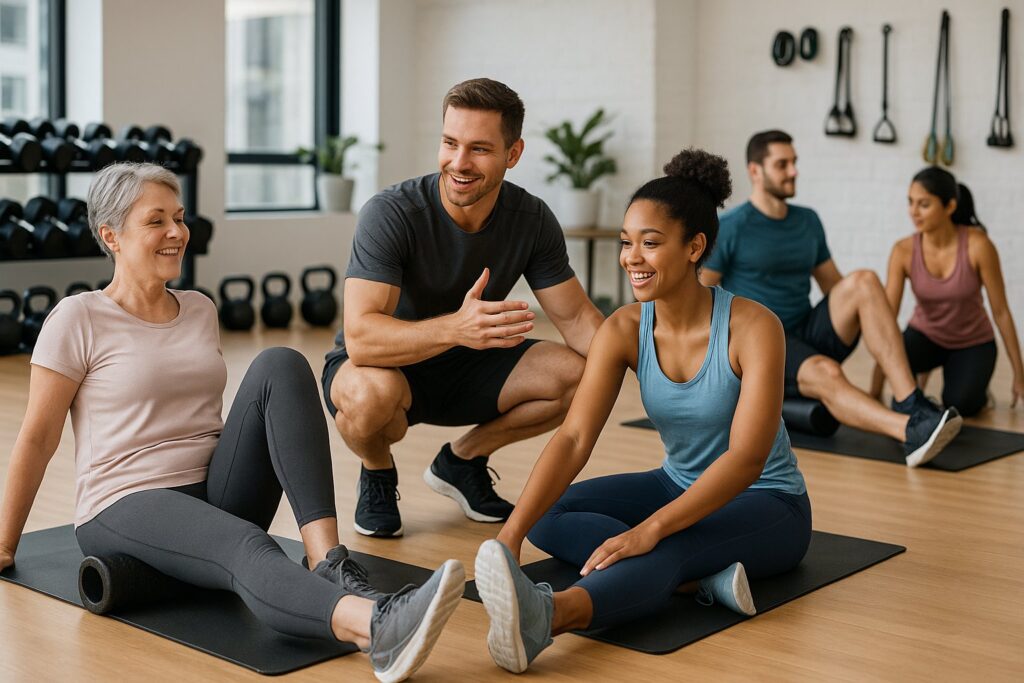
Want to keep your muscles happy and cut down on post-exercise pain? It really helps to prep your body before activity, use proper movement techniques, and ramp up the intensity slowly.
These steps protect muscles and joints. Plus, they make workouts feel a bit less risky and a lot more effective.
Warm-Up and Dynamic Stretching
A decent warm-up raises your body temp and gets blood flowing to your muscles. That’s a good way to prep for movement and avoid sudden injuries.
Warm-ups might be as simple as a brisk walk, light jog, or a few minutes on a bike. Five to ten minutes is usually enough.
Dynamic stretching means moving your muscles and joints through their full range of motion. Unlike static stretching, you’re not forcing anything to hold still.
Think arm circles, side lunges, or leg swings. These get things moving without locking anything up.
Combining warm-ups with dynamic stretches really wakes up your nervous system. Your muscles just work better this way.
Less stress on muscle fibers means a lower chance of soreness later. Who doesn’t want that?
To warm up before workout, explore these top 10 warm-up exercises to reduce injury risk and soreness.
Improve your flexibility with Hyperbolic Stretching — just 8 minutes daily for better mobility and reduced soreness.
Proper Exercise Technique
Using good form is honestly the secret sauce for avoiding soreness and injury. Pay attention to alignment, breathing, and smooth movements every time.
Bad form puts weird pressure on your joints and muscles. That’s how you end up with strains, pulls, or nagging overuse injuries.
For weightlifting, posture matters—a lot. It keeps the load where it belongs and saves your back, knees, and shoulders.
Watching instructor videos, reading guides, or just asking a coach for feedback can make a big difference. Take the time to learn each move.
Gradual Progression of Intensity
Jumping into high-intensity workouts too fast? That’s a classic way to get sore. Your body needs a little time to adjust.
Gradual progression means adding weight, reps, or time slowly—spread over days or weeks, not all at once.
Starting a new activity? Try shorter sessions first, then add five minutes each week. For strength training, bump up the weight in small steps.
Using a workout log or app can help you track progress and avoid overdoing it. A steady approach keeps your muscles safe from those tiny tears that make you regret everything the next day.
Nutrition for Soreness Prevention and Recovery
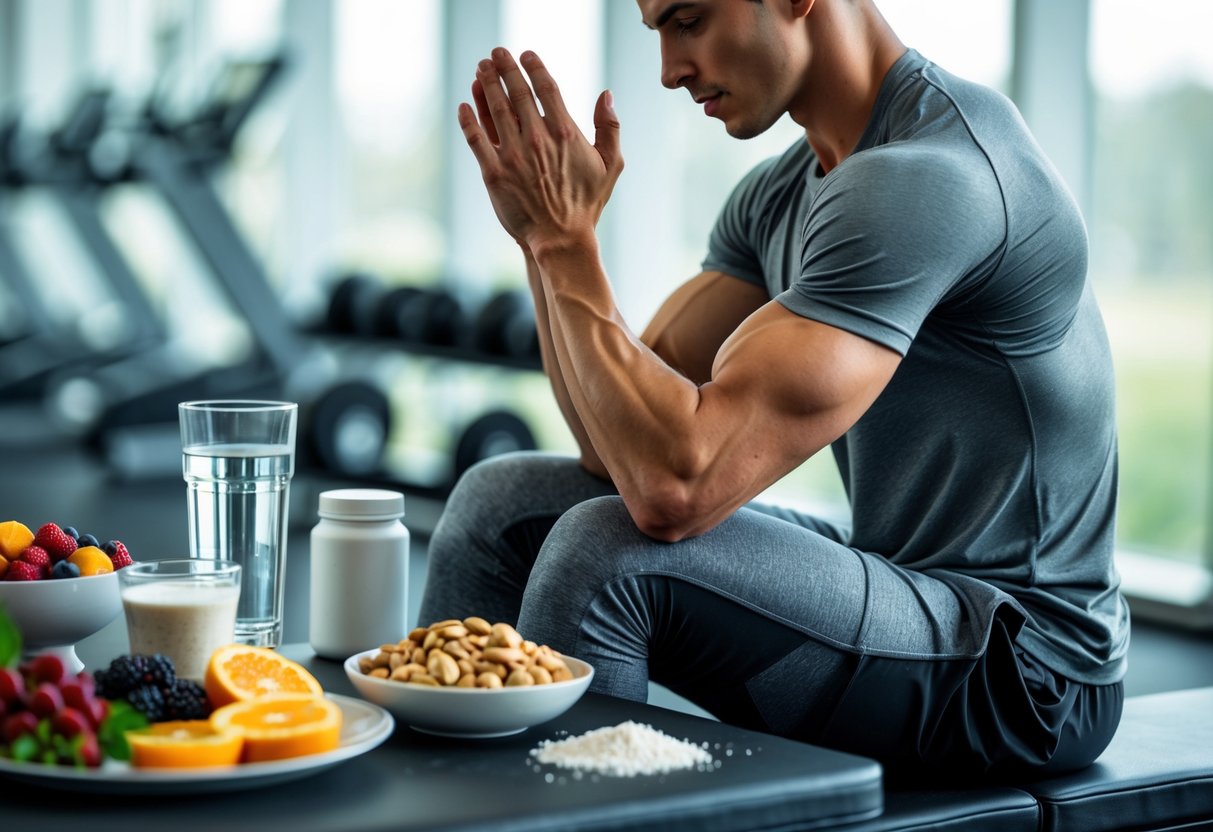
Eating the right foods after exercise can really help with reducing soreness and speeding up recovery. The basics? Get enough protein, smart carbs, plenty of vitamins and minerals, and stay hydrated with electrolytes.
Optimal Protein Intake
Protein is what your muscles need to repair and grow after a workout. Getting enough helps cut down on muscle breakdown and makes recovery faster.
Good sources are lean meats, eggs, Greek yogurt, cottage cheese, beans, and tofu. The usual advice for active folks is about 1.2 to 2.0 grams of protein per kilogram of body weight per day.
Try to eat some protein within a couple hours after you finish exercising. That’s when your muscles are most ready to use it.
A solid post-workout meal could be chicken breast with brown rice and steamed veggies, or maybe a protein shake with banana and nut butter. Both animal and plant proteins work, as long as you get enough.
Try our top pick protein to aid muscle recovery from Amazon below.
Importance of Carbohydrates and Glycogen Replenishment
Carbs matter, too—they help refill muscle glycogen, which gets drained during exercise. If you skip this step, recovery can drag on.
Go for moderate to high-glycemic carbs after your workout. White rice, potatoes, fruit, or whole-grain bread are all good picks.
Pairing carbs with protein is even better for muscle repair. Here’s what a balanced meal might look like:
| Food | Carbohydrate Grams (g) | Protein Grams (g) |
|---|---|---|
| Oatmeal + Milk | 40 | 10 |
| Turkey Sandwich | 35 | 18 |
Carbs in your recovery meal help reduce fatigue and soreness—especially after longer or really tough workouts.
Role of Vitamins, Minerals, and Electrolytes
Vitamins and minerals are like your muscle’s support crew. Antioxidants like vitamin C and E help with recovery by lowering oxidative stress after intense sessions.
Minerals such as magnesium, potassium, and calcium matter for nerve signals and muscle contraction. Foods like oranges, berries, spinach, sweet potatoes, nuts, seeds, and dairy are all winners here.
Omega-3s (in salmon, chia seeds, walnuts) are anti-inflammatory and might help with soreness, too. Electrolytes like sodium and potassium get lost in sweat and need replacing.
Hydration and Electrolyte Drinks
Staying hydrated is huge for muscle recovery. Water moves nutrients around and helps flush out waste from exercise.
If you’re sweating a lot, water alone sometimes isn’t enough. Electrolyte drinks or sports drinks can help replace sodium, potassium, magnesium, and calcium.
Muscle cramps or dark urine? You probably need more than just water. Use electrolyte drinks if your workout is over an hour, it’s hot, or you’re a heavy sweater.
Quick hydration tips:
- Drink water throughout the day
- Use a pinch of salt or an electrolyte drink for long workouts
- Eat water-rich foods like watermelon or cucumber
Hydration cuts down on cramps, helps you bounce back faster, and just keeps everything running smoother.
Boost metabolism and hydration with Tea Burn, a simple tea supplement that supports fat loss and energy restoration.
Effective Muscle Recovery Techniques
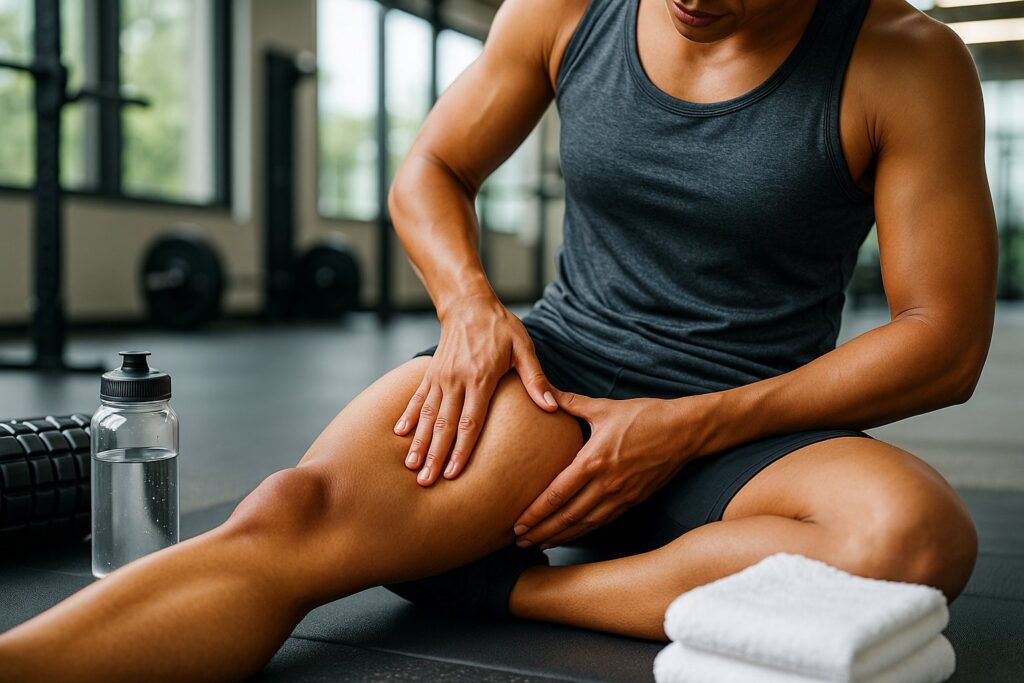
Muscle recovery isn’t just about waiting it out—it’s about taking steps to reduce soreness and get your strength back. Doing it right can cut down your recovery time and help you dodge injuries.
Active Recovery Techniques
Active recovery is all about light movement after a tough workout. Walking, gentle cycling, swimming, or yoga all count.
These activities are easier than your main workout but keep your muscles moving. They help boost blood flow to tired areas, bringing in more oxygen and nutrients.
Even short bursts of gentle movement can make a difference. It’s especially helpful within 24 hours after a tough session.
Stretching or foam rolling can also ease tightness. Unlike total rest, active recovery uses light activity to keep muscles from stiffening up.
Key Activities:
- Light walking
- Yoga or stretching
- Swimming
- Foam rolling
Rest and Sleep
Rest and sleep are your body’s main repair tools. During sleep, muscle fibers fix the tiny damage from training.
Adults usually need 7–9 hours of sleep. A steady sleep schedule helps your body recover faster.
Rest days between hard workouts let muscle fibers rebuild. Skipping rest? That’s a shortcut to overuse injuries and weaker performance.
Taking a full day off or spacing out tough sessions gives your muscles time to heal. Listen to your body—sometimes it’s smarter to rest than to push through pain.
Some tips for better rest:
- Stick to a regular bedtime
- Avoid screens before bed
- Keep your room quiet and dark
Our muscle recovery foods list can further support your body’s healing process.
Blood Flow Optimization
Good blood circulation is key for recovery—blood brings oxygen and nutrients to muscles. There are simple ways to help this along after a workout.
Gentle movement and stretching open up blood vessels and help clear out waste like lactic acid. Massage and foam rolling can also boost circulation and break up tight spots.
Heat, like a warm shower or heating pad, relaxes muscles and improves blood flow. Compression gear (sleeves, socks) might help with swelling and circulation, too.
Ways to enhance blood flow:
| Method | Benefit |
|---|---|
| Light movement | Reduces stiffness |
| Stretching | Increases flexibility |
| Massage | Eases muscle tightness |
| Heat therapy | Relaxes and improves circulation |
| Compression wear | Lowers swelling and improves flow |
Don’t forget hydration—water helps move nutrients to muscles and gets rid of waste more easily.
Physical Therapy and Self-Care Methods

Physical therapy and self-care can really help with muscle soreness and speed up recovery. The right methods make a big difference in comfort and can keep post-exercise pain in check.
Massage and Massage Therapy
Massage is a classic for improving blood flow and helping sore muscles chill out. You can do self-massage or see a pro for deeper relief.
Massage can ease pain, help muscles heal, and loosen up tight spots from intense workouts. Techniques usually involve kneading, friction, and circular motions right on the sore muscles.
These actions can break up knots and improve flexibility. Plus, massage promotes relaxation—good for your mind and body after training.
Self-massage with hands or tools is handy if you can’t see a therapist. Just skip massaging areas with injuries, like sprains or open wounds.
Foam Rolling and Self-Myofascial Release
Foam rolling is a go-to self-care move. You roll your muscle groups over a foam cylinder to work out soreness and tight spots.
This puts gentle pressure on the connective tissue, which may help release tension and boost blood flow. It’s especially useful for muscles that feel extra tender after exercise.
Move slowly over each area and pause on sore spots for 20–30 seconds. Some people use massage balls or sticks for more targeted pressure.
Foam rolling before and after workouts is common, especially for legs, back, and arms. It can be a bit uncomfortable, but it shouldn’t hurt badly.
Don’t roll directly on joints or injuries. A little imperfection is fine—just listen to your body and adjust as you go.
Need a foam roller to relief muscle tension? Get one from Amazon now.
Compression Garments and Cooling
Compression garments—think sleeves or socks—are popular for reducing swelling and muscle soreness. Wearing them after a workout might help push fluid away from tired muscles, supporting quicker recovery.
Some studies even say they could cut down on muscle vibration while moving. People often keep them on for a few hours post-exercise.
These garments should fit snugly, but not so tight that they mess with your blood flow. They’re pretty easy to slip into and can be worn while doing errands or just lounging.
Cooling methods like ice packs or cold-water baths are another go-to for soreness and swelling. Cold can numb the area, take down inflammation, and make things a bit less uncomfortable.
Short cooling sessions—around 10 to 20 minutes—are usually enough. If you have any medical conditions, it’s smart to check with your doctor before using cold therapy.
Thermal and Topical Recovery Approaches
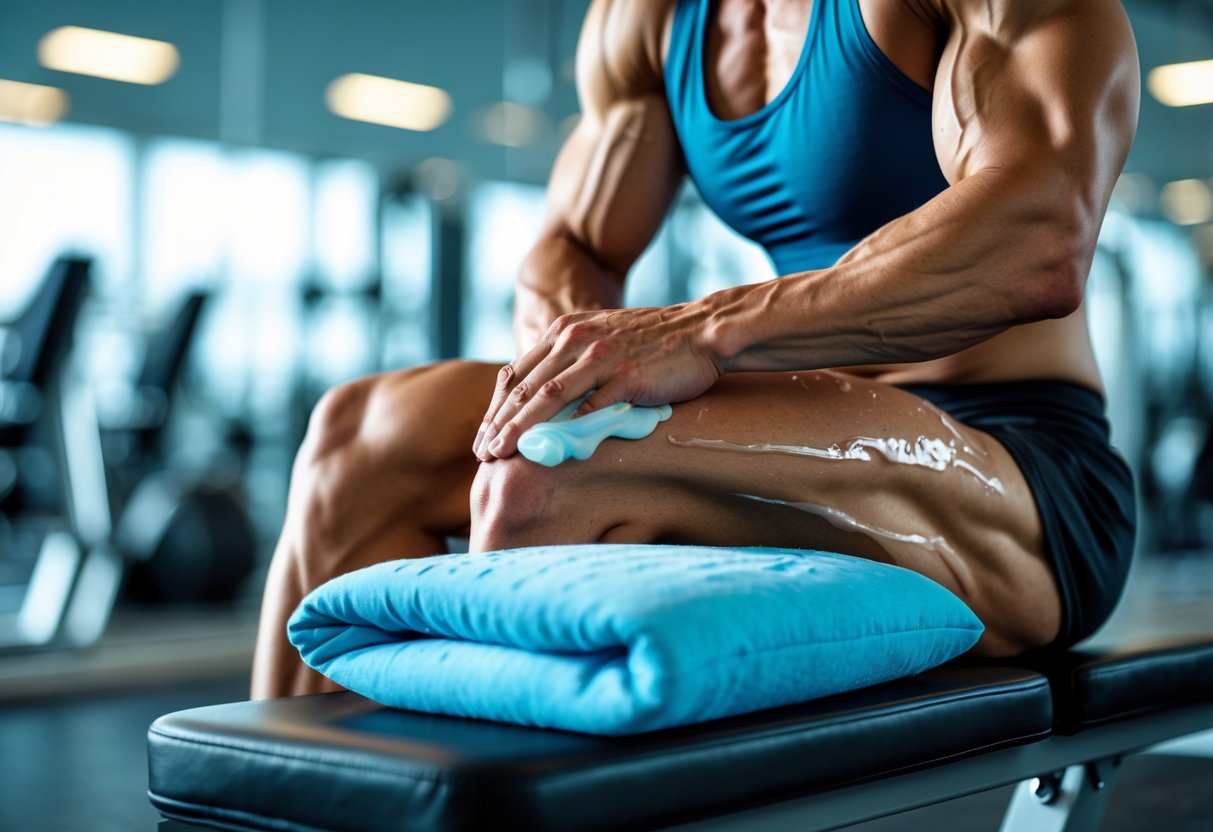
Thermal and topical approaches can be a real relief for sore muscles. Each one works a bit differently, depending on when you use it and what your body needs.
Heat Therapy
Heat therapy includes things like warm packs, heating pads, hot baths, or local heat devices. The main idea is to boost blood flow to sore spots, bringing in oxygen and nutrients that help fix muscle fibers.
Heat also relaxes tight muscles and makes you feel less stiff. Most people save heat therapy for a day or so after working out, not right after a tough session.
Jumping in with heat too soon could make inflammation worse in some cases. Common heat options include:
- Heating pads
- Warm towels
- Hot water bottles
- Warm baths and showers
Don’t use heat on fresh injuries or if there’s swelling. Always test the temperature first—burns are no joke.
Cold Therapy and Cryotherapy
Cold therapy, or cryotherapy, means using cold packs, ice baths, or even ice massage to cool down sore muscles. Applying cold right after exercise helps cut down swelling and keeps inflammation in check.
Cold slows down nerve signals, so it can dull the pain a bit. It tends to work best in the first day or two after a tough or new workout.
Popular cold therapy methods:
- Ice packs wrapped in cloth
- Cold gel packs
- Quick ice baths
- Targeted ice massage
Honestly, cryotherapy can be a little uncomfortable, so most people keep sessions to about 10–20 minutes. Never put ice right on your skin—frostbite is not worth it.
Contrast Showers
Contrast showers are about switching between hot and cold water. Some call it contrast water therapy, but it’s really just about changing up the temperature fast.
Alternating hot and cold can make blood vessels open and close, maybe helping with soreness and flushing out waste from muscles. Plenty of athletes swear by this after tough workouts.
A simple cycle could be:
- Hot water (1–3 minutes)
- Cold water (30 seconds–1 minute)
- Repeat 3–5 times
People with heart issues or circulation problems should probably skip contrast showers. Keep temperatures moderate and pay attention to how your body reacts.
Integrating Recovery Into Your Workout Routine

Building recovery into your workout plan is honestly a game-changer. It can help with soreness, lower your chances of getting hurt, and just make coming back to exercise feel better.
Mixing in active recovery, a little yoga, or even changing up how often you push yourself can really pay off.
Active Recovery Workouts
Active recovery is all about gentle movement instead of just sitting still on rest days. Low-intensity stuff gets blood flowing to your muscles, which helps clear out lactic acid and other junk that makes you sore.
Good examples? Walking, swimming, or cycling at a chill pace. These don’t stress tired muscles but still keep you moving.
Even 20 to 30 minutes can do the trick. Some perks of active recovery:
- Less stiffness
- Faster bounce-back between hard workouts
- Lower muscle tightness
Light stretching or simple bodyweight moves—like air squats or easy lunges—are also solid choices. The key is to keep it easy and avoid pushing through pain.
Incorporating Yoga and Mindfulness
Yoga and mindfulness can be surprisingly helpful for both body and mind during recovery. Yoga uses slow, controlled stretches that boost flexibility and ease tight muscles after tough workouts.
Some classic recovery poses: child’s pose, downward dog, and pigeon pose. These target the big muscle groups that usually get sore from running, lifting, or cycling.
Even if you’re new, there are plenty of online videos or beginner classes out there. Mindfulness, on the other hand, is about focusing on the present—deep breathing or short meditation can help your brain handle pain and ease stress hormones that slow healing.
Pairing mindfulness with yoga can make you feel more relaxed and tuned into your body. Try setting aside a few minutes after each workout for calm breathing and gentle movement. It doesn’t have to be fancy.
For flexibility improvement, explore our Hyperbolic Stretching Review to see if it’s right for you.
Adapting Frequency and Intensity
Switching up how often and how hard you work out is huge for recovery. If you always go hard, you’re asking for soreness or even injury.
Tracking your workout and rest days helps you avoid overdoing it. Beginners might want to start with 2–3 workouts a week, leaving at least one rest or active recovery day in between.
Even experienced athletes need some lighter days to let muscles recover. You can also dial back intensity by lifting less weight or slowing down your pace.
Jotting down how you feel after each session in a workout log isn’t a bad idea. Some typical adjustments for better recovery:
| Factor | Beginner | Intermediate/Advanced |
|---|---|---|
| Workout Days | 2-3 per week | 4-5 per week |
| Intensity | Moderate | Mix of hard & easy |
| Rest/Active | 1-2 days per week | 1-2 days per week |
Medications and Supplements for Soreness Management
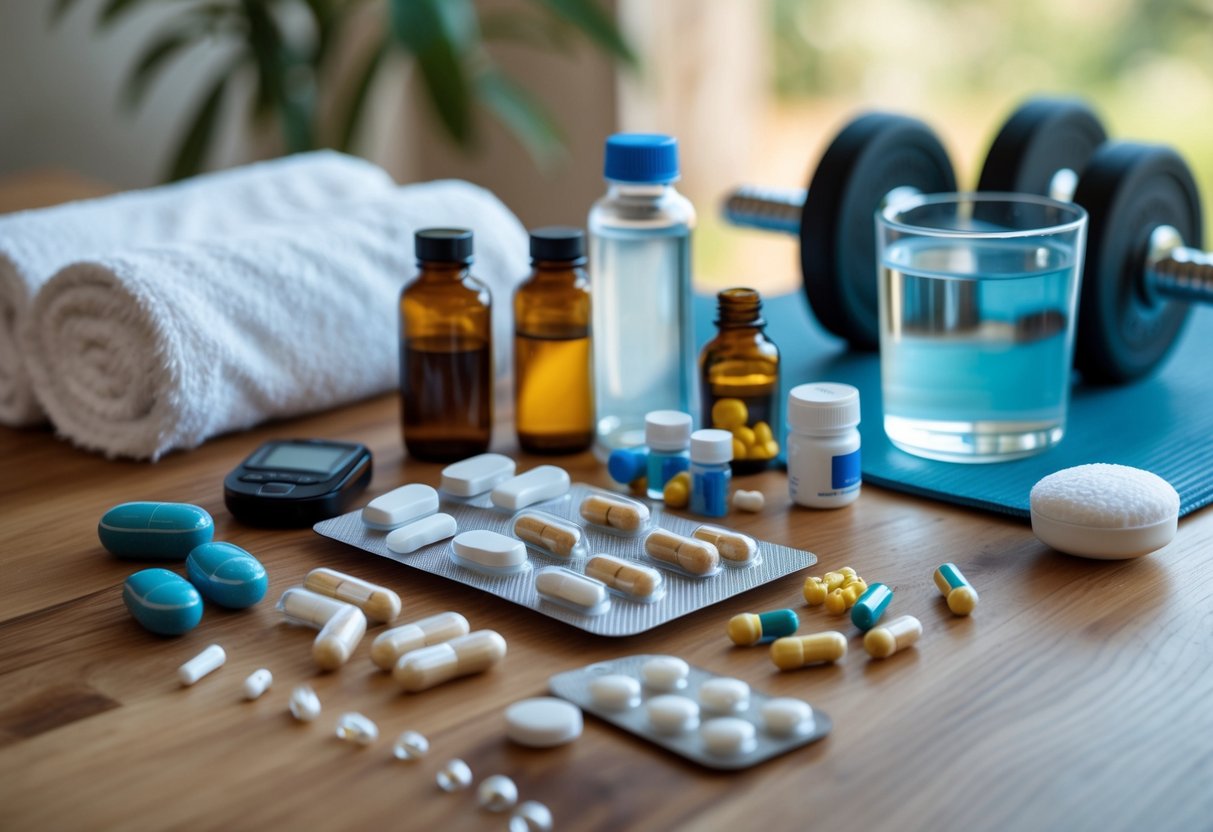
People turn to all sorts of medications and supplements to deal with post-exercise muscle soreness. Each one has its own set of pros and cons, so knowing a bit about them can help you make smarter choices.
Anti-Inflammatory Medications
Anti-inflammatories like ibuprofen or naproxen are pretty common for easing pain and swelling. You can grab them over the counter, and they usually help with mild to moderate soreness.
These meds work by blocking chemicals that trigger inflammation. Still, taking them too often or in high doses can mess with your stomach, kidneys, or even cause ulcers.
Stick to the recommended dose, and don’t use them as a long-term fix. If you’ve got health issues, check with your doctor first. Really, rest and stretching should come first—painkillers are more of a short-term backup.
Recommended Supplements
Certain supplements might help with recovery and muscle soreness. Protein powders are a favorite—they help muscles repair and grow, especially if you take them soon after exercise.
Branched-chain amino acids (BCAAs) might also help by supporting muscle repair. Omega-3s, like those in fish oil, have anti-inflammatory benefits that could make muscle pain less annoying.
Magnesium helps muscles work right and comes in pills or powders. There’s even some buzz about tart cherry juice—its antioxidants might lower soreness, but results can vary.
Here’s a quick look at common recovery supplements:
| Supplement | How It Helps |
|---|---|
| Protein | Muscle repair, growth |
| BCAAs | Reduce soreness, support recovery |
| Omega-3 (Fish Oil) | Lower inflammation |
| Magnesium | Muscle relaxation |
| Tart Cherry Juice | Antioxidant, soreness relief |
Supplements should add to a balanced diet, not take the place of real food or rest. Get some from Amazon below.
Risks and Considerations
Both meds and supplements have risks, so use them thoughtfully. Overdoing painkillers like ibuprofen can lead to side effects—think stomach bleeding or kidney issues.
Mixing supplements with medications can sometimes cause problems, too. Not every supplement is tested or even safe, and quality can be all over the place between brands.
Check labels, avoid sketchy ingredients, and stick with brands you trust. If you’re pregnant, have health conditions, or are giving these to kids, talk to a doctor first.
Honestly, the basics—good sleep, hydration, and a balanced diet—matter more for recovery than any pill or powder. Use these products only when you really need them.
Frequently Asked Questions
Muscle soreness after exercise usually has a reason. There are solid ways to dial down the discomfort and bounce back safely.
What are the main causes of muscle soreness following exercise?
Soreness after a workout mostly comes from tiny tears in your muscles. This is what people call delayed onset muscle soreness, or DOMS.
It pops up 12 to 24 hours after activity, especially if you try something new or push the intensity. DOMS is more common with lots of eccentric moves, like running downhill or slowly lowering weights.
How can one prevent muscle soreness after engaging in physical activity?
Gradually ramping up your workout intensity helps muscles adjust and keeps soreness in check. Warming up and cooling down are key for prepping and relaxing your muscles.
Staying hydrated and using good form matter, too. Stretching before and after workouts can help protect your muscles.
Are there any quick remedies to alleviate muscle soreness post-workout?
Gentle stretching and light activity—like going for a walk—can get blood moving and ease stiffness. Ice or heat packs might help with the aches.
Some folks swear by massage or foam rolling. Over-the-counter pain meds are okay once in a while, but only as directed.
What are the best practices for muscle recovery after intense exercise sessions?
Giving your muscles enough rest really matters. Eating a balanced diet with enough protein helps them repair.
Solid sleep speeds up recovery. Many people also use gentle yoga, swimming, or massage to help things along.
Is it safe to continue working out when experiencing muscle soreness?
Mild muscle soreness happens to just about everyone and usually isn’t a big deal. Light activities or dropping the intensity a bit are generally fine.
If you’re feeling severe pain, sharp twinges, or notice your joints are swollen, that’s a different story. It’s probably best to rest and let your body recover if the soreness is strong or messes with your movement.
How does muscle pain post-exercise relate to workout effectiveness?
Sometimes, muscle soreness just means your muscles got pushed in a new way. But honestly, you don’t need to feel sore to make progress or get stronger.
Plenty of great workouts won’t leave you aching the next day. Pain or being super sore doesn’t really prove your workout was better, despite what some people might say.
If you’re looking for structured guidance, try our 30-Day Home Workout Challenge that balances training and recovery effectively.
Conclusion
Muscle soreness after workouts—yeah, it happens to pretty much everyone. Usually, it means your muscles are getting used to something new or you’ve pushed a bit harder than usual.
There are a bunch of ways to deal with that annoying discomfort. Rest gives your muscles a chance to bounce back.
Gentle stretching or just moving around lightly can get your blood flowing and sometimes takes the edge off. Hydration matters too—honestly, being well-hydrated before, during, and after exercise makes a difference for your muscles.
Ice packs or a warm compress can ease pain or that stiff, achy feeling. Personally, I find a warm shower helps, but everyone’s got their thing.
Lots of folks swear by a balanced diet with enough protein for muscle repair. And sleep, well, it’s underrated—your body does most of its fixing while you’re out cold.
If you really need it, over-the-counter pain relievers can help, but they’re not a substitute for letting your body rest.
Here’s a quick list of what tends to work best:
- Get enough sleep each night
- Drink plenty of water
- Stretch before and after workouts
- Eat foods rich in protein and vitamins
- Take rest days or alternate muscle groups
- Use ice or heat for relief
Listening to your body is honestly one of the best ways to avoid injuries. If your muscles are really hurting or the pain just won’t quit after a few days, it’s probably time to check in with a doctor.
Ready to fuel your recovery with nutrition tailored to you? Take the free Keto Creator quiz to get your personalized keto meal plan.


